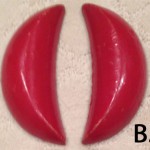The informant was telling me how Greeks used the dregs from coffee grinds to read the future:
Informant: In some cultures they read tea leaves, but in some cultures they read coffee grinds.
Me: huh
Support: dregs from the coffee
Informant: They took the dregs turned over a little cup and turned it three times, and then they read the inside of the cup – what dripped out – and read what they would see “oh your gonna take a trip, oh you’re gonna get married, oh this or that”
Support: they always said I was going to get married, but here I am!
Context:
The Informant is a Greek woman who was born in the United States. She currently lives in Carmel-By-The-Sea, CA. Though she was not born in Greece, her parents immigrated to the US and she was born into a very Greek community in Phoenix, AZ. The performance was held during an Easter party, in front of her younger sister, who provided supporting information, as well as me.
Analysis:
This was completely new to me, as I had never heard of this ritual and only faintly heard of the tea leave predictions. I think it is really interesting how different cultures share so many similar traditions and patterns, and while they are similar they are also very different. It also raises questions about why cultures come up with these practices, seeing that they are not always accurate, but fascinating nonetheless.


